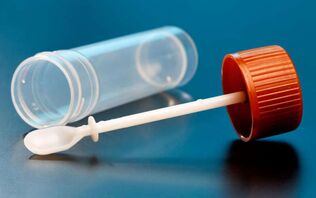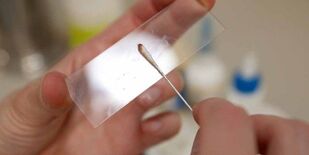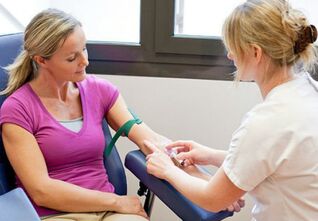What tests need to be done to identify worms?
Worm tests must be done periodically in order to identify the disease in a timely manner. The most famous of these is stool analysis, which is done before getting a job or a trip to a sanatorium, but this is not the only and not the most reliable way to identify parasites. The most accurate answer will be given by the combination of tests.
What tests are there for worms
The checklist that needs to be done to identify parasites is quite long.
The key is:
- Stool analysis, also known as worm eggs, is the most common method. Advantages - mass use, does not require complex equipment. Minus - lack of accuracy;
- ELISA, aka blood test for worms. Pros - high accuracy. Disadvantages - only reveal the degree of development of certain parasites, at other times the results will be questioned;
- Analysis of other biological media (urine, sputum, duodenal contents, epidermis). Advantages - allows you to identify parasites in localization that are not accessible by other analyzes. Disadvantages - related to significant discomfort for the patient.
Typically, patients are prescribed a combination of several tests to identify parasites. The recovery criteria were negative ELISA results and some negative results of the biological environment study in which worms were detected.
Stool analysis for worm eggs
A large number of worms live in the gut, so the most common test for worms is a stool test. She was prescribed for routine medical examinations for adults and children, before being sent to a sanatorium or children’s camp, as part of a health book, while being hospitalized. This analysis was also performed by people who had been in contact with infected patients, who had eaten untested foods, who noted symptoms characteristic of worms.

No need to make special preparations for analysis, you can collect feces at any time of the day, but the most noticeable is the morning stool. Immediately before giving birth, you should wash your perineum to prevent urinary excretion and discharge from the genitals.
Dirt for worm analysis is collected in special containers. It is glued, and a special spoon is glued to collect the material. To collect the most informative parts of the material, you need to take a sample from the middle part of the feces section. The container should be filled with about a third. You need to send it to the lab on the same day.
In the laboratory, experts examine feces under a microscope and identify worm eggs in it. Most of them have feature shapes that allow you to accurately determine the type of worm. Based on the results of the analysis, conclusions are drawn about the absence of eggs or about their presence and type, after which treatment is prescribed.
This is the most common but most inaccurate worm test. The reason is that there may be no eggs in the part that goes into the container, even if there are worms. Therefore, if the patient complains of characteristic symptoms or comes in contact with the source of infection, it should undergo 5-6 tests at intervals of 2-3 days. In this case, the probability of detecting parasites increases significantly. Along with the stool study, other diagnostic procedures are prescribed.
Scratching the skin

This analysis usually completes the feces analysis. The most accurate results are achieved when diagnosing cream worms that lay eggs on the surface of the skin near the anus. Indications for such analysis are routine examinations of children and adults, enrollment of children in kindergarten, school, camp or sanatorium, hospitalization of children and adults, suspicion of creamy worm infection (itching in the anus, digestive disorders, contactwith sick people). Often, children suffer from this disease, which explains the name of the worm (pinworm of children).
No need to make preparations for worm analysis, you can not wash the perineum - so it is possible to wash the parasitic eggs, you should refrain from bathing or showering the night before. The analysis was performed in the morning. A special film is used that collects material from the skin of the intergluteal folds. The study was also conducted under a microscope. It does not detect other helminthiases, except for cream worms.
Urinalysis
This screening is the most frequently prescribed, as the parasite almost never lives in the urine. The situation may occur when the cream worm is found in the urine analysis, but this indicates a violation of the rules to bypass the analysis - the parasite and its eggs enter the container from the skin of the perineum. Most often, this condition occurs in girls, more rarely in boys.
But there are still clues for testing. A number of tropical parasites live in the kidneys and urinary organs, which one “appreciates” through visits to Asian and African resorts. With the proliferation of exotic recreation areas, the spread of parasites that are not specific to our country is also increasing. For this reason, it is recommended to do urine and blood tests for worms after a trip to the resort.
Types of worms found in urine:
- Trichomonas;
- Distomum haematobium;
- Filaria sanguinis hominis;
- Taqnia echinococcus.
Also in the urine there may be hepatic parasite eggs - echinococcus and flukes.
Sputum analysis
There are a number of parasites that spend most or all of their lives in the lungs. The symptomatology of their appearance is not typical - catarrhal phenomena develop in the bronchi (inflammation, cough, wheezing). Hemoptysis, pneumonia of unknown origin and other phenomena of the lungs can be observed.
Parasites detected by sputum test:
- Ascaris - at the larval stage they need oxygen;
- Echinococci and alveococci - tissue parasites that live in parenchymal organs, including the lungs;
- Dwarf dwarf - lives mainly in the lungs;
- Strongyloidosis, noncatorosis - parasitosis, characterized by localization of the intestine, the location of the lungs is found to be unusual.
To collect sputum, no special preparation is required, but it is recommended to brush your teeth and take the substance in the morning. Before that, it is useful to drink plenty of fluids - this increases sputum expectations. The collection container must be clean, but not necessarily sterile - bacteria do not play a role in the diagnosis. In this case, both the parasite itself and its eggs are detected. If the patient cannot cough up sputum, it is removed from the trachea using a vacuum suction.
It is possible to use drugs that increase the excretion of sputum, stimulate its formation to obtain more accurate analysis results for worms. In combination with blood tests for worms, it gives very precise results. Unlike fecal tests, eggs are more likely to be found.
Blood test

ELISA, or blood test for worms, is the most accurate method to determine it. Helminths cause a strong reaction from the immune system - eosinophilic leukocyte content increases, immunoglobulin production increases, and specific antibodies to parasites appear. Based on their detection, the ELISA method was constructed.
Antibodies to parasites are very specific - they can be clearly diagnosed, while they are only found in the blood only in the presence of parasites and within 3 weeks after disappearance.
Blood from veins is required for analysis. Does not require special training. The results can be obtained within two days. The accuracy is almost 100%, the specificity of the antibody does not allow the wrong result. Recovery criteria were negative outcomes a month after treatment.
Duodenum content analysis
The bile ducts and pancreas open into the duodenum. These organs are often affected by echinococcosis and opisthorchiasis. The parasite lays its eggs, which pass through the intestinal tract. The method of worm analysis of duodenal contents allows you to identify the disease more accurately than stool analysis.
Ingredients taken with duodenal probe on an empty stomach. If the patient has a clear reflex gag, a pain reliever is used. This procedure is quite unpleasant, therefore, it can only be used if other examination cases are in doubt.
When do you need a worm test
Worm testing must be performed in the following situations:
- Patients experience symptoms of helminth infection;
- Patients have been in contact with invasive sources (sick people, untested products, areas with poor hygiene environment);
- Confirmation is required that the patient is not a source of infection (employment, health records, rural rest, hospitalization).
How to test for worms

To get a worm test, you need to get a referral from your doctor. A large number of examinations do not require preparation, and if there are any nuances, the doctor will explain them while prescribing the study. Indications are required for the physician to write a referral.
In a commercial clinic, you can take a test regardless of the indication. Prices vary. The time to get stool and scrap results is about a week, analysis of urine, sputum, blood is about 2 days, depending on the workload of the laboratory.
Helminths what can be detected using the test
Analysis for worms makes it possible to identify most types of parasites - intestinal and extraintestinal forms. The most accurate is a blood test for worms, which allows you to identify parasites.
















































